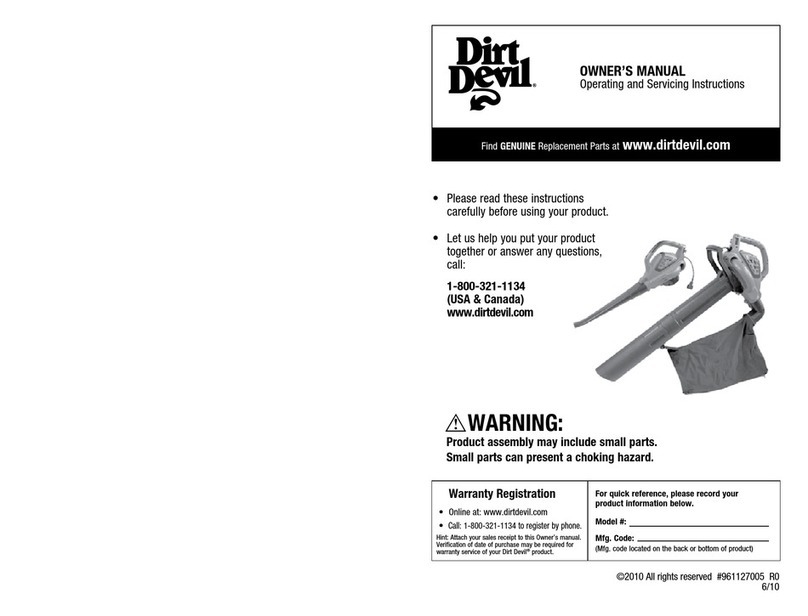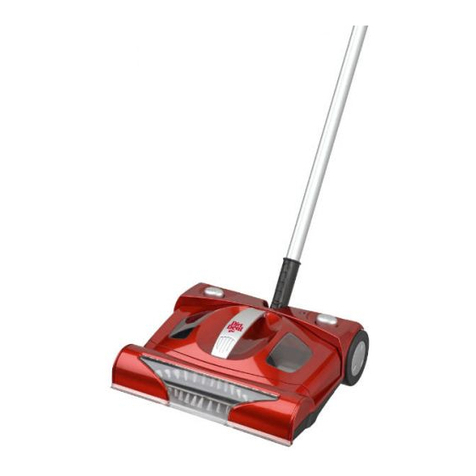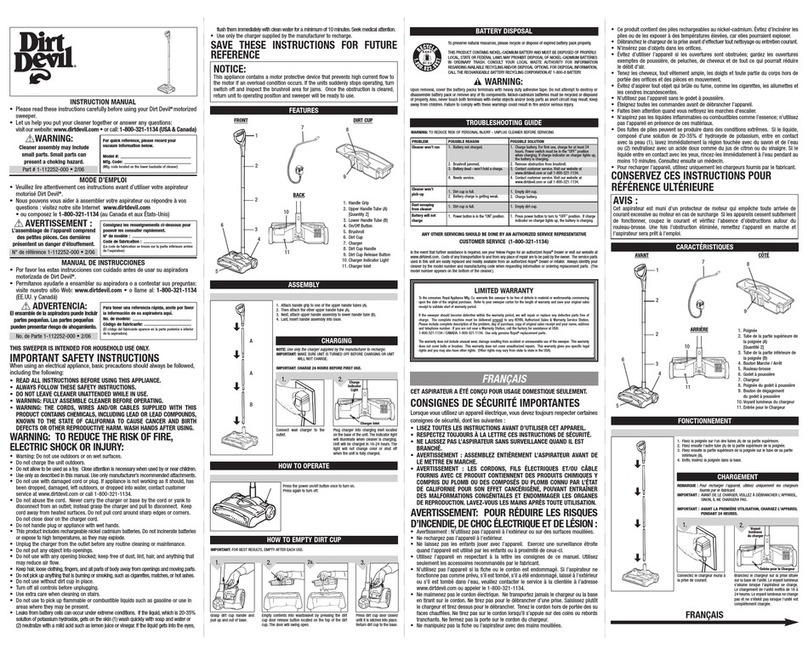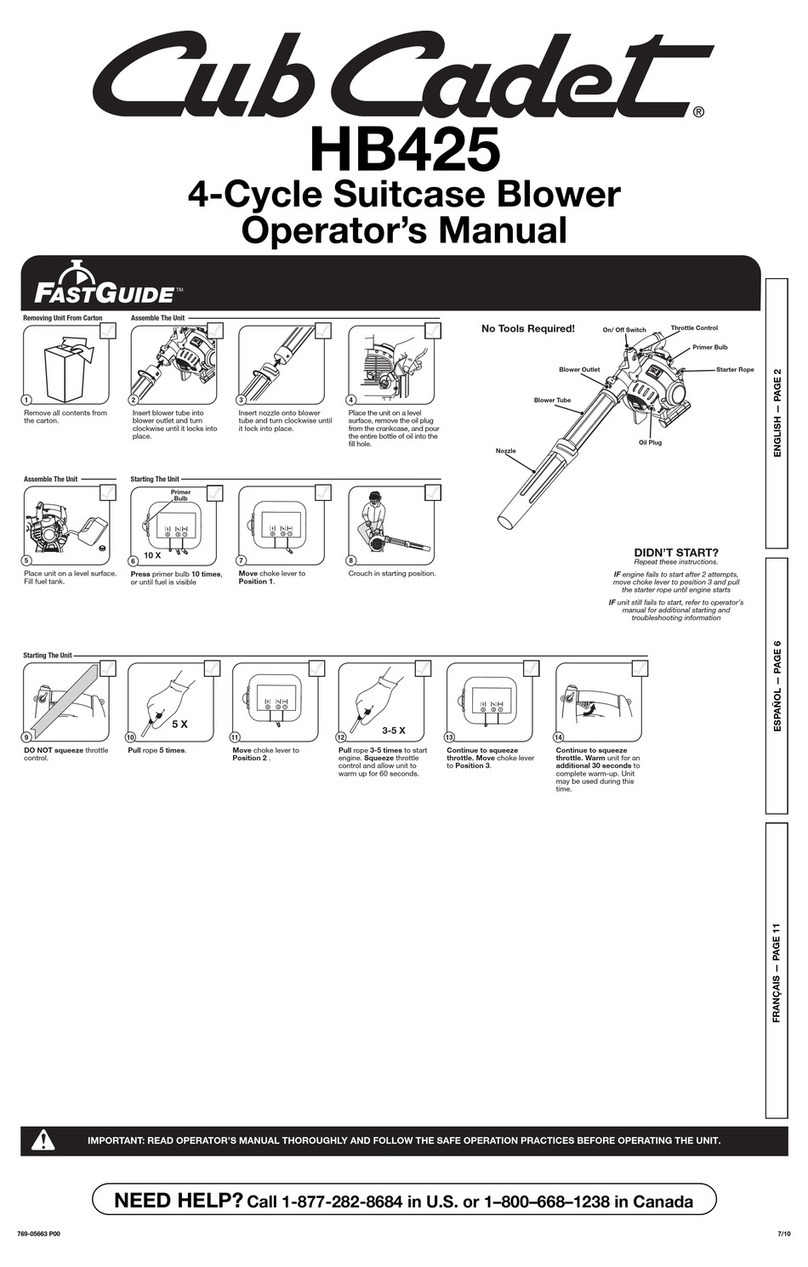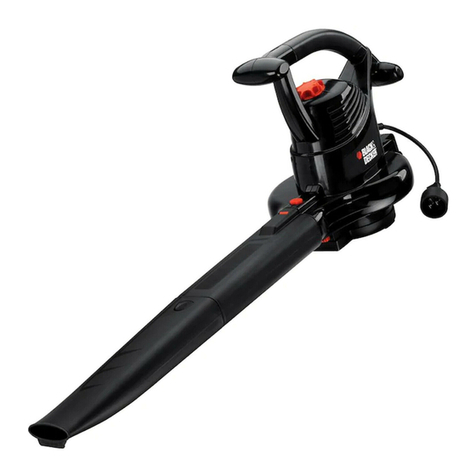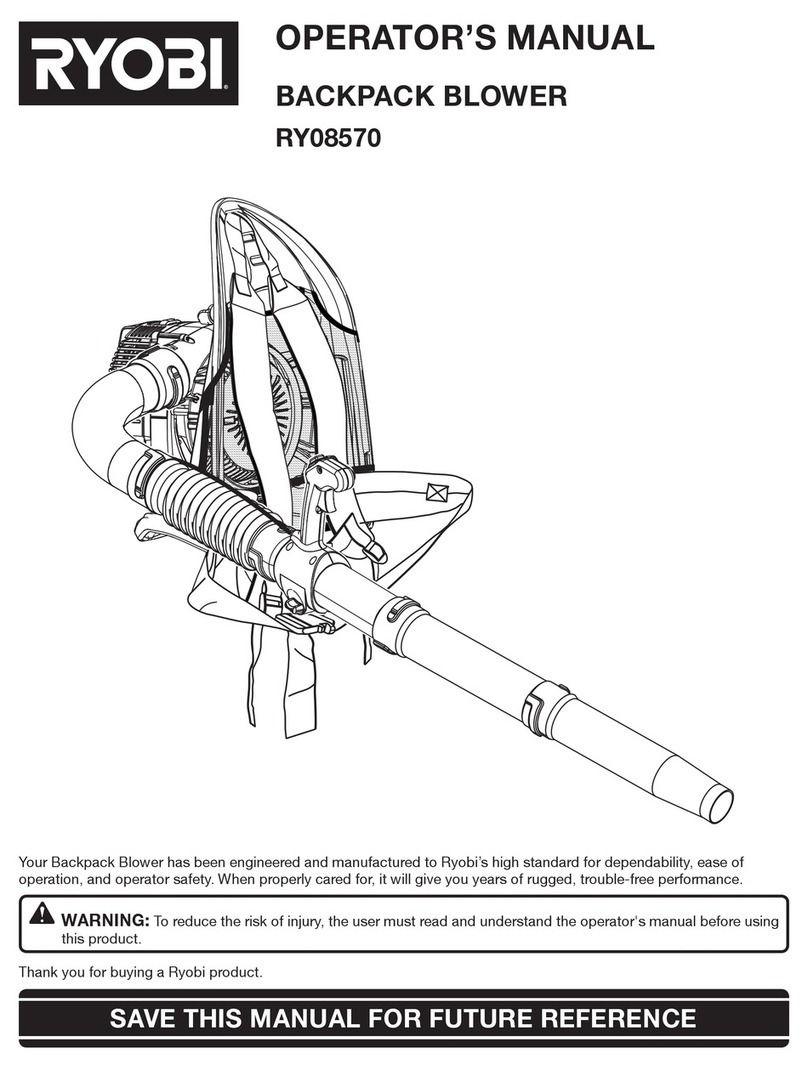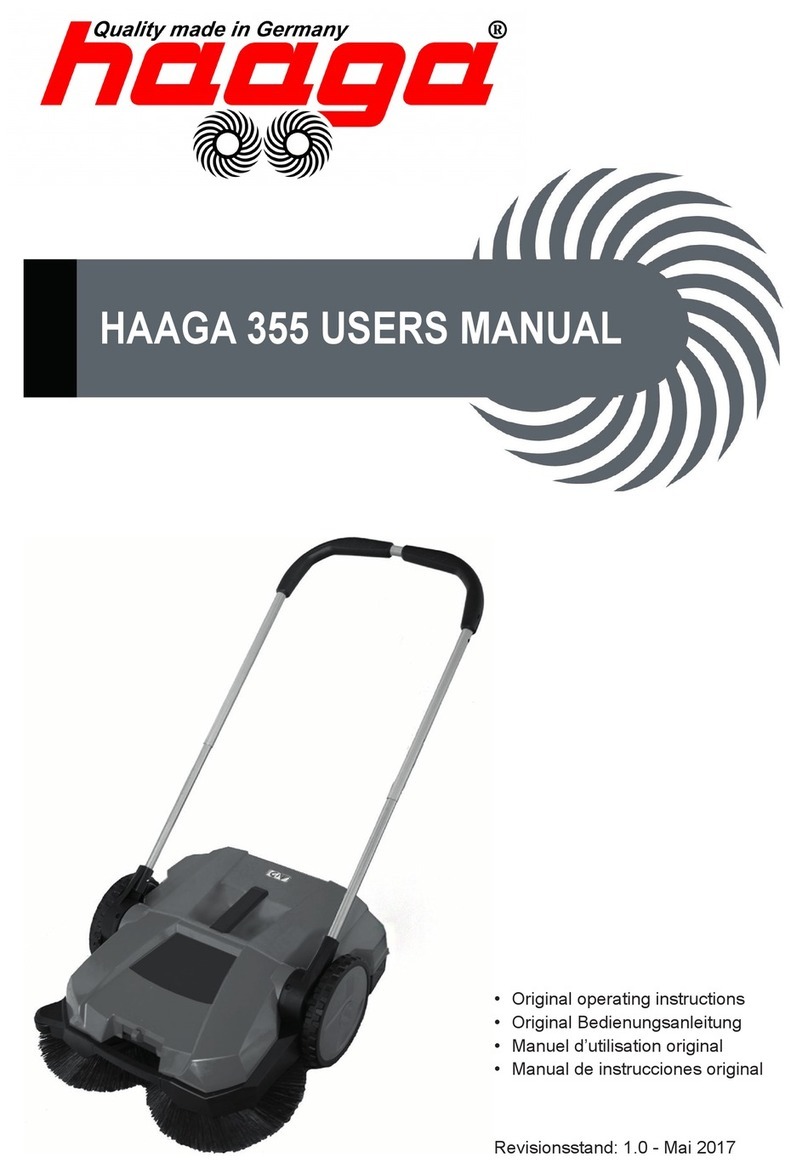
3
1 Sicherheitshinweise
DE
1 Sicherheitshinweise
1.1 zur Bedienungsanleitung
Lesen Sie diese Bedienungsanleitung vollständig durch, bevor Sie mit dem
Gerät arbeiten. Bewahren Sie die Anleitung gut auf. Falls Sie das Gerät an
Dritte weitergeben, geben Sie die Bedienungsanleitung mit.
Die Nichtbeachtung dieser Anleitung kann zu schweren Verletzungen
oder Schäden am Gerät führen.
Für Schäden, die durch Nichtbeachtung dieser Bedienungsanleitung ent-
stehen, übernehmen wir keine Haftung.
Beachten Sie Hinweise, die wie folgt gekennzeichnet sind, unbedingt, um
Unfälle und Schäden am Gerät zu vermeiden.
1.2 zu bestimmten Personengruppen
Diese Geräte können von Kindern ab 8 Jahren und darüber und von
Personen mit verringerten physischen, sensorischen oder mentalen Fähig-
keiten oder Mangel an Erfahrung und/oder Wissen benutzt werden, wenn
sie beaufsichtigt werden oder bezüglich des sicheren Gebrauchs des Ge-
rätes unterwiesen wurden und die daraus resultierenden Gefahren ver-
standen haben. Reinigung und Benutzer-Wartung dürfen nicht durch Kin-
der ohne Beaufsichtigung durchgeführt werden.
Kinder dürfen nicht mit dem Gerät spielen. Kinder jünger als 8 Jahre
sollten vom Gerät und der Anschlussleitung ferngehalten werden, wenn es
eingeschaltet ist oder abkühlt. Verpackungsmaterialien dürfen nicht zum
Spielen verwendet werden. Es besteht Erstickungsgefahr.
Personen mit Sensibilitätsstörung, insbesondere verminderte Empfind-
lichkeit für Temperaturunterschiede, müssen beim Einsatz dieses Gerätes
ungleich vorsichtiger sein.
1.3 zu Heißdampf und heißen Geräteteilen
Richten Sie den Fuß des Geräts niemals auf Personen, Tiere oder
Pflanzen. Richten Sie den Fuß des Geräts stets nach unten auf den zu rei-
nigenden Untergrund. Achten Sie selbst dann darauf, dass zu keiner Zeit
Körperteile unter den Fuß des Geräts gelangen können. Betreiben Sie das
Gerät niemals, ohne Schuhe zu tragen.
Legen Sie das im Betrieb befindliche Gerät niemals auf die Seite. Ver-
wenden Sie das Gerät niemals in waagerechter Haltung oder gar über
Kopf. Lassen Sie das im Betrieb befindliche Gerät niemals unbeaufsichtigt.
Benutzen Sie das Gerät nicht zum Reinigen an Druckbehältern oder
Behältern, deren Inhalt Sie nicht kennen. Es besteht Berst- oder Explosi-
onsgefahr.
Richten Sie den Fuß des Geräts nicht auf elektrische Geräte, Steckdo-
sen, Kabel usw. oder das Innere von Öfen. Seien Sie umso vorsichtiger bei
im Boden eingelassenen Steckdosen oder dergleichen. Es besteht die Ge-
fahr eines elektrischen Schlags.
Lassen Sie heiße Geräte- und Zubehörteile, insbesondere das Mikro-
fasertuch, erst abkühlen, ehe Sie diese berühren. Tragen Sie das Gerät al-
lein am Handgriff oder am Transportgriff.
Achten Sie darauf, dass Sie nicht zu lang auf einer Stelle dampfreini-
gen. Anderenfalls kann der Untergrund beschädigt werden.
Sorgen Sie während und nach der Arbeit für gute Belüftung.
1.4 zur Stromversorgung
Das Gerät wird mit elektrischem Strom betrieben, dabei besteht grundsätz-
lich die Gefahr eines elektrischen Schlags. Achten Sie daher besonders
auf Folgendes:
Achten Sie darauf, dass der Fuß des Geräts im Betrieb stets auf dem
zu reinigenden Untergrund aufliegt. Legen Sie das Gerät niemals auf die
Seite oder betreiben es gar in der Luft! Anderenfalls könnte Flüssigkeit in
den Motor laufen und zum Kurzschluss führen!
Halten Sie den Fuß des Geräts im Betrieb vom Stromkabel fern. Strom-
kabel dürfen generell nicht mit Hitze und Feuchtigkeit in Kontakt kommen.
Anderenfalls besteht die Gefahr, dass das Stromkabel beschädigt wird,
was zu einem Stromschlag führen kann.
Wenn Sie den Stecker aus der Steckdose herausziehen wollen, ziehen
Sie immer direkt am Stecker. Ziehen Sie niemals am Stromkabel. Trans-
portieren Sie das Gerät niemals am Stromkabel. Es könnte beschädigt
werden.
Kontrollieren Sie das Stromkabel vor dem Benutzen auf eventuelle Be-
schädigungen.
Wickeln Sie das Stromkabel vor dem Gebrauch immer vollständig ab.
Achten Sie darauf, dass das Stromkabel nicht geknickt, eingeklemmt,
überfahren wird oder mit Hitzequellen in Berührung kommt.
Tauchen Sie das Gerät niemals in Wasser oder andere Flüssigkeiten
und halten Sie es von Regen und Nässe fern. Fassen Sie den Stecker nie
mit nassen Händen an.
Betreiben Sie das Gerät nur, wenn die auf dem Typenschild angegebe-
ne elektrische Spannung mit der Spannung Ihrer Steckdose überein-
stimmt. Falsche Spannung kann das Gerät zerstören.
Schließen Sie das Gerät ausschließlich an Steckdosen mit Schutzkon-
takt an. Benutzen Sie nach Möglichkeit keine Verlängerungskabel. Falls
dies unumgänglich ist, benutzen Sie nur GS-geprüfte, spritzwasserge-
schützte, einfache Verlängerungskabel (keine Mehrfachsteckdosen), die
für die hohe Leistungsaufnahme des Geräts ausgelegt sind.
Ziehen Sie unmittelbar nach dem Gebrauch den Stecker aus derSteck-
dose. Bevor Sie das Gerät reinigen oder warten, stellen Sie sicher, dass
der Stecker aus der Steckdose gezogen ist.
1.5 zur bestimmungsgemäßen Verwendung
Das Gerät darf nur im Haushalt eingesetzt werden. Es ist für eine ge-
werbliche Nutzung nicht geeignet.
Setzen Sie das Gerät ausschließlich im Haushalt zum Reinigen von normal
verschmutzten, ebenen Hartböden (z. B. Fliesen, Steinböden, Linoleum
und anderen glatten, versiegelten Flächen) oder Teppichen ein, die der ho-
hen Temperatur und der Feuchtigkeit des Heißdampfes standhalten.
Jede weitere Verwendung gilt als nicht bestimmungsgemäß und ist
untersagt. Verboten ist insbesondere:
Das Reinigen von:
- Personen, Tieren oder Pflanzen sowie Kleidungsstücken, die sich
noch am Körper befinden.
- Oberflächen, die durch gesundheitsgefährdende Stoffe verschmutzt
sind. Der heiße Dampf kann diese Stoffe lösen und freisetzen.
- Textilien, Leder, Möbeln, Wänden, Glasscheiben, unversiegelten, la-
ckierten, geölten oder gewachsten Holz- oder Parkettfußböden so-
wie Oberflächen aus weichem oder glänzendem Kunststoff.
Verboten ist zudem:
Das Befüllen des Wassertanks mit anderen Flüssigkeiten als kaltem
Wasser. Zusätze im Wassertank, wie z. B. Desinfektionsmittel, Reini-
gungsmittel oder Duftstoffe, machen den Gebrauch des Geräts unsicher.
Die Verwendung:
- in der Nähe von explosiven, glühenden, glimmenden, brennenden,
spitzen oder scharfkantigen sowie entzündlichen Stoffen, an Druck-
behältern oder Behältern, deren Inhalt Sie nicht kennen.
- als Raumbefeuchter oder gar als Raumheizung.
- im nicht vollständig montierten Zustand oder mit anderem Zubehör
als in dieser Anleitung genanntem.
- auf Flächen, die mit Lebensmitteln in Berührung kommen.
- mit leerem Wassertank.
- in waagerechter Haltung oder gar über Kopf.
- ohne sauberes Mikrofasertuch.
- im Freien.
Warnt vor Gefahren für Ihre Gesundheit und zeigt mögliche Verlet-
zungsrisiken auf.
Weist auf mögliche Gefährdungen für das Gerät oder andere Gegen-
stände hin.
Hebt Tipps und Informationen hervor.
M366.book Seite 3 Mittwoch, 7. November 2012 9:26 09



